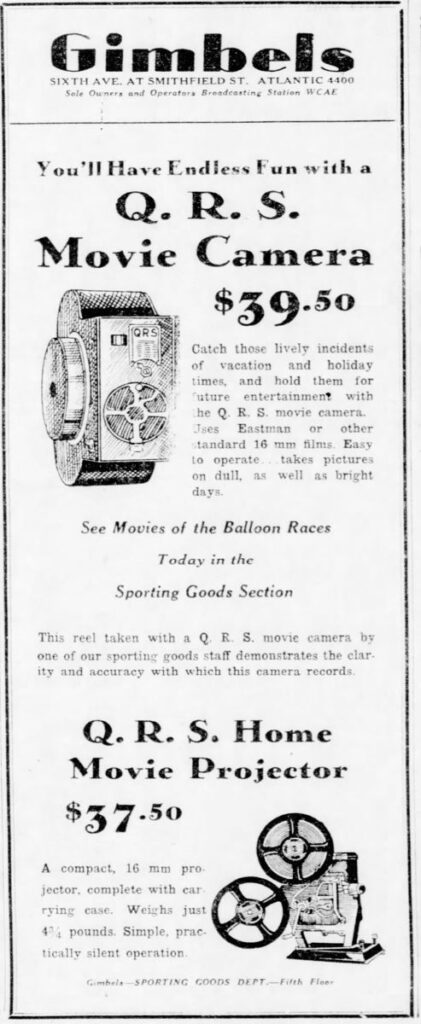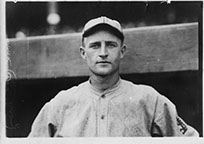Published May 29, 1929 Age 38
By Regis M .Welsh Pittsburgh Post Gazette
Sports of All Sorts
Local sandlotters, still ambitious to be big leaguers, should listen if anyone would attempt to tell them the prelude of the short story which yesterday told of Bill Doak being released by the Cardinals. It might throw a different aspect on their work, their plans, their ambitions. Because, whether they know it or not, Bill Doak, once a pitcher for Knoxville when they played in the old brick yard off Georgia, became one of Pittsburgh’s illustrious sons in the big league. Those were the days when Pittsburgh sandlots were productive of the fastest ball ever played outside a league, and the old Allegheny County League, where Doak got his training, was superior to many of the so-called minor leagues of today.
When Bill started pitching for Knoxville, with Dude Craig catching, the guarantee in the County League was $23, the other two dollars going to pay half the umpire’s salary. And anyone who recalls those days realizes that the players and umpires worked for their “dough.” Doak was one of the star pitchers of the league, even though he never could beat the Shaners, and along with him were Bill Malarkey of Natrona, Scratcher Fairman of the Shaners, Billy Madine of the Lyceum, Donkey Donnelly of Hilldale and others who pass from memory. Doak was the product of the South Hills, which gave to the big leagues Hans Lobert, Enos Kirkpatrick, Otto Knabe, Lew Moren, Joe Schultz and perhaps another, and he came as the direct result of the great games played every Sunday at the old A. J. Martin field out on the “short line.”
Bill brings to mind when Wheeling was in the Central League as he worked there in 1910-11, going up from there to Columbus, thence to Akron, thence to the Reds for a short trial and finally to the Cards, where with his spitter, he stayed from 1913 to 1924 before the Florida real estate game gave him visions of being a millionaire.
But, much as one likes to remember Doak as a big leaguer, his sandlot days around here recall the greatest baseball era this community ever enjoyed. When Bill Luckhardt, over on Diamond street, was president of the Allegheny County League, his store headquarters, there was more baseball, smart and otherwise, played than there ever has been since. There were Jim McCall and John Shellady, the newsboy of Pittsburgh Lyceum; old Ed Hickey of Millvale, whose “frozen” ball and mule tricks are still recalled. There was Shorty Conwell, with his red face, back of the bat for Natrona, the great trio of Bardelang-Pfiefer-Lippert of the never-to-be-forgotten Fairbanks, the only “road team in the league.” And they will never die so long as Johnny Yoedt keeps his hand in the game. Then there was Rabbit Jimmy Miller of Duquesne Heights, back from the majors to handle Knoxville, and that West End crowd of Jimmy Harkins, Eddie Foley, Hermie Geyer, Georgie Agerter, Petie Berghammer, Caliper Snyder, Tardrop Rickert, Bert Wilson and Marty Berghammer, who later joined the major league colony when he hooked up with the Feds.
Doak followed in the footsteps of Moren, Kirkpatrick, Knabe and Lobert to the big show, leaving behind him more good ball players who never made the grade than any section in this country. Tommy Murray, Hugo Swartling, Red McKenna, the three Dawson boys, four or five Loberts, chief among them Frank; Eddie Artman, Johnny Lauer and ever so many others, were produced up there among the hilltops before the era of real estate frenzy and golf did away with the baseball diamonds which dotted every other street. Those were, in reality, the “good old days” when, at either a fight or a rolic, or even a ball game, the Denny grounds, the old Basin, the Bedford park, the W. U. P. grounds saw excitement every Saturday and twice on holidays.
Those were the days when Tommy Carter, Fog Horn Shoemaker, John Keefe, Pat Shalley, Tom McNamara were the greatest umpires this section ever saw. One needs but mention Doak’s name to recall the Bill Malarkey, of Natrona, who later went with the Giants as a promising “youngster” after having won 18 straight games for Buffalo. And at that time Bill had a boy almost old enough to play ball. Those were the days when Barney Harkins was doing tricks with the ball and at the gate at which later Mike Kelly became famous with the P. J. Sullivans. That was when Paddy Carr had the invincible Ambridge team of Lynn Ware, the three older brothers of Steve Swetonic, Joe, Jim and Andy, Lefty Hughes, Old Man Patterson, Bill Rittleman and later the flashy Johnny Mullan of Penn State.
When Wilkinsburg had Doc Thunhorst at second base, the slugging Yingling in the outfield and the pudgy Red Sullivan back of the bat and Eddie Dischner was the star southpaw of the section. Those are the days the name of Bill Doak brings back, days which, apparently, will not come again, unless they tear down all the apartment houses to make room for playing fields. When Whitey Alperman graduated from Etna to become a big leaguer with Brooklyn, and Lefty George did his stuff in the Tri-Borough League Of Millvale, Etna and Sharpsburg.
Those were the days when star infielders like Rev. Ralph Hayes got $5 for playing third base like Arthur Devlin, or when catchers like Larry Spahr and Ben Fraley got nothing but an argument if they asked for more than $3. That was when Billy Wright and Jimmy Watchhorn were the mainstay of the Fosters in Carnegie, and Crafton had a team out on the race track good enough to beat the Shaners in a post-season game at Expo Park.
Bill Doak’s release brings back all this flood of memory, the greatest baseball era Pittsburgh ever enjoyed. His release just about terminates Pittsburgh’s representation in the majors, outside of Jack Cummings, George Susce, Binger Bayne, Bill Regan, Danny Taylor and Steve Swetonic. Doak did fourteen years service in the majors and was one of its few spitballers. He started a baseball era unprecedented hereabouts when good ball games were so numerous that one had no worry of where to go and what they would see. It’s tough to see a fellow like Bill passing. But how much younger one feels when he recalls Doak’s early days and the things they bring to mind.
The Dawn of Home Movies….

